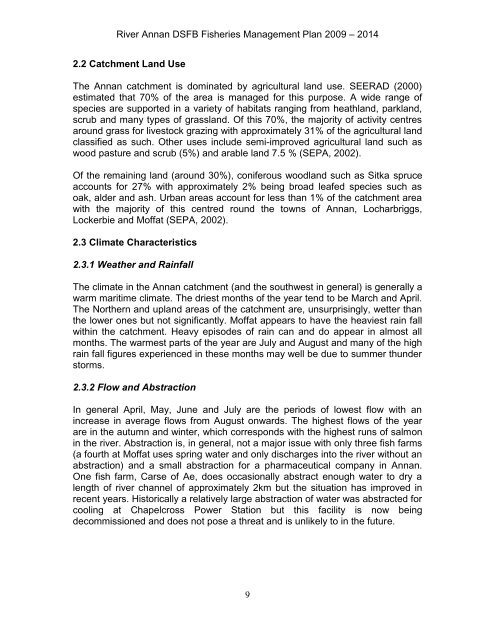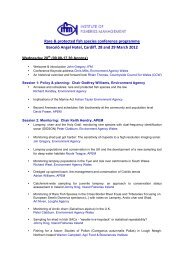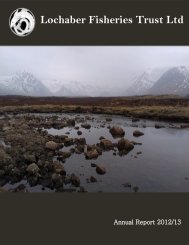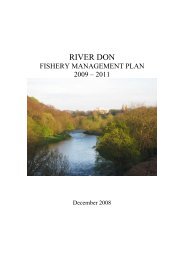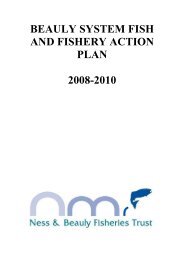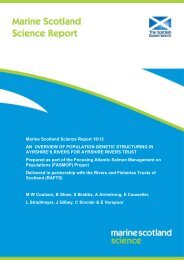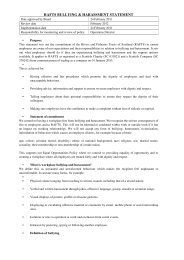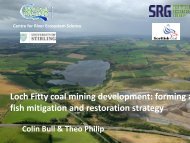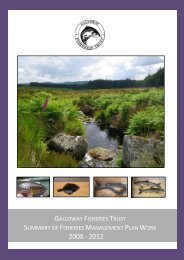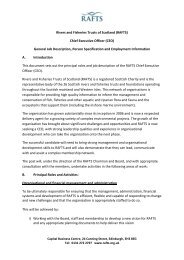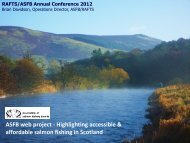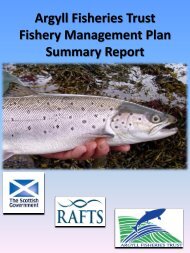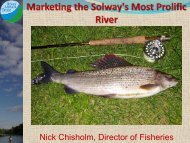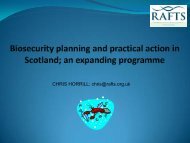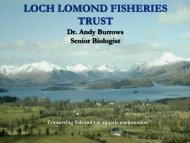Create successful ePaper yourself
Turn your PDF publications into a flip-book with our unique Google optimized e-Paper software.
River <strong>Annan</strong> DSFB Fisheries <strong>Management</strong> <strong>Plan</strong> 2009 – 20142.2 Catchment Land UseThe <strong>Annan</strong> catchment is dominated by agricultural land use. SEERAD (2000)estimated that 70% of the area is managed for this purpose. A wide range ofspecies are supported in a variety of habitats ranging from heathland, parkland,scrub and many types of grassland. Of this 70%, the majority of activity centresaround grass for livestock grazing with approximately 31% of the agricultural landclassified as such. Other uses include semi-improved agricultural land such aswood pasture and scrub (5%) and arable land 7.5 % (SEPA, 2002).Of the remaining land (around 30%), coniferous woodland such as Sitka spruceaccounts for 27% with approximately 2% being broad leafed species such asoak, alder and ash. Urban areas account for less than 1% of the catchment areawith the majority of this centred round the towns of <strong>Annan</strong>, Locharbriggs,Lockerbie and Moffat (SEPA, 2002).2.3 Climate Characteristics2.3.1 Weather and RainfallThe climate in the <strong>Annan</strong> catchment (and the southwest in general) is generally awarm maritime climate. The driest months of the year tend to be March and April.The Northern and upland areas of the catchment are, unsurprisingly, wetter thanthe lower ones but not significantly. Moffat appears to have the heaviest rain fallwithin the catchment. Heavy episodes of rain can and do appear in almost allmonths. The warmest parts of the year are July and August and many of the highrain fall figures experienced in these months may well be due to summer thunderstorms.2.3.2 Flow and AbstractionIn general April, May, June and July are the periods of lowest flow with anincrease in average flows from August onwards. The highest flows of the yearare in the autumn and winter, which corresponds with the highest runs of salmonin the river. Abstraction is, in general, not a major issue with only three fish farms(a fourth at Moffat uses spring water and only discharges into the river without anabstraction) and a small abstraction for a pharmaceutical company in <strong>Annan</strong>.One fish farm, Carse of Ae, does occasionally abstract enough water to dry alength of river channel of approximately 2km but the situation has improved inrecent years. Historically a relatively large abstraction of water was abstracted forcooling at Chapelcross Power Station but this facility is now beingdecommissioned and does not pose a threat and is unlikely to in the future.9


